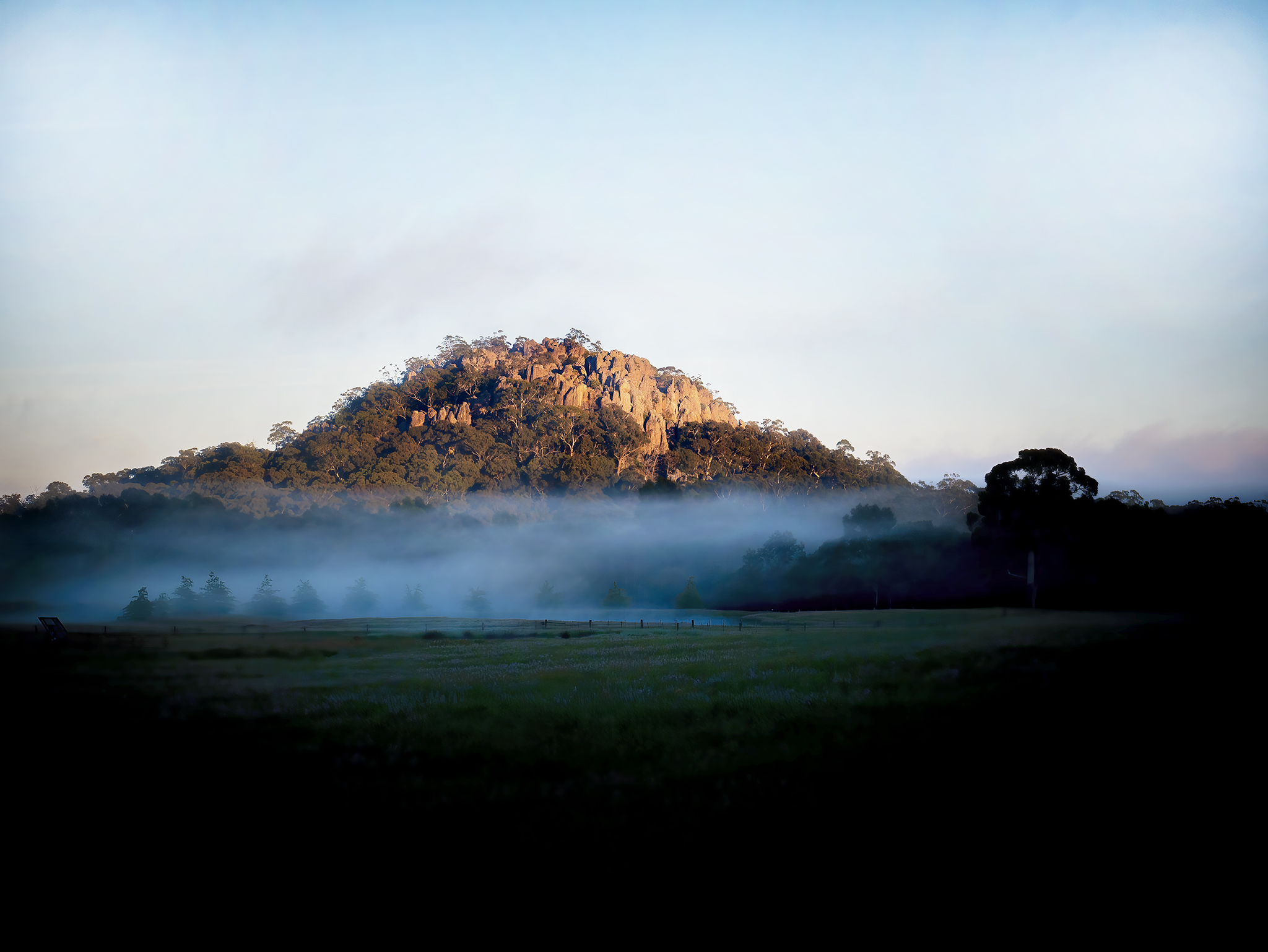For this post, I’d like to take you to a place that’s quite special to me, near my hometown of Romsey in Victoria’s Macedon Ranges. This magnificent geological formation is the infamous Hanging Rock, and it was one of my favourite places to go as a kid.
Hanging Rock is a volcanic formation referred to as a mamelon, and was formed more than 6 million years ago as a result of a thick type of magma erupting from a vent and hardening in place. It’s the southernmost in a series of such formations which stretch as far as North Queensland, and were created as the Australian tectonic plate gradually passed over a volcanic hotspot over a period of 27 million years. The name Hanging Rock comes from a naturally-formed archway that occurs over one of the pathways that leads up to the summit, where one rock is held suspended a metre or so above the ground by those on either side of it. Anyone wanting to make it to the top has to pass under the Hanging Rock, and hope that it remains hanging while they do it.

If you’ve heard of Hanging Rock, chances are you know it from Picnic at Hanging Rock – the classic Australian novel-turned-movie about a group of local schoolgirls who were taken there on a field trip, only to vanish while on a hike, never to be seen again. It continues to amaze me the amount of people who believe there’s actual truth to this story. Just to be clear, it’s a complete work of fiction, and a very popular one at that – an annual outdoor screening of the movie is still held every year at the rock itself.
However, while no tragedy has ever befallen a group of schoolgirls at Hanging Rock, the region does in fact have a dark and very real history…
Humans have lived in the areas surrounding Hanging Rock for more than 26,000 years. Nearby Mount William was a significant trading hub centred around a quarry, and axes formed at this quarry have been found several hundred kilometres away. While Mount William was a place of trade, Hanging Rock was a place of ceremony, and was a meeting place on the boundaries of three local groups – the Woi Wurrung, Dja Dja Wurrung and Taungurung people.
Hanging Rock held vital cultural significance, and was host to corroborees, initiation rituals and songline ceremonies. It was a hive of activity and community for millennia, but all that changed upon European invasion.
Throughout the first half of the 19th century, the Aboriginal people living on these lands were forcibly displaced, and thousands died from frontier violence and introduced diseases like smallpox. In a period of just thirty years, more than 80% of Victoria’s Aboriginal population died. Those that survived would have ended up at Coranderrk Aboriginal Reserve, and would likely have never seen Hanging Rock again.
Being just an hour from Melbourne, Hanging Rock has increasingly become an attractive tourist destination for weekend getaways in recent years. However, its dark past remains largely unknown by the hordes of tourists, and largely unacknowledged by the council that runs the park.
As those who manage Hanging Rock continue to host horse races on ‘Australia Day’, and push their popular, picnic-friendly narrative – it will be interesting to see when, if ever, they come to terms with the rock’s violent and shameful history.
–
Hanging Rock, Australia


